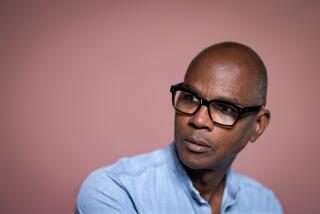‘Robert Dowd: Pop Art Money’
- Share via
Money makes the world go ‘round, and we now realize that when the force isn’t with us, things can come to a screeching halt. Artist Robert Dowd was well aware of the power and glory of money, and during the 1960s he was “making” it after his own fashion -- creating drawings and paintings that satirically reinterpreted the face of American currency.
In one series he substituted a homage to his own heroes -- making an image in the style of such artists as Vincent van Gogh, Pablo Picasso, Jasper Johns -- in place of the presidents usually slotted in the oval (when once there was an oval). In another series he depicted the back of a $10 bill with the stately U.S. Treasury building standing like a Greek temple -- except this one is on fire or hit by a cyclone.
The career of this now-obscure artist is revisited in “Robert Dowd: Pop Art Money” at the Frederick R. Weisman Museum of Art at Pepperdine University, through April 5. Michael Zakian, director of the museum and curator of the show, has been researching Dowd for the last year and a half, finding most of the material in the artist’s private papers, since little has been written about him. “He was like a storyteller,” Zakian says, “and he used money as a way of telling stories about people’s priorities, wants and desires.”
In 1962, Dowd was recognized as a pioneer of Pop art. He was included in the landmark “New Painting of Common Objects” at the Pasadena Art Museum alongside the likes of Andy Warhol, Jim Dine, Wayne Thiebaud. It was among the first Pop art exhibitions in the country.
For the next six years, Dowd made gargantuan-size drawings and paintings of money, some nearly 10 feet wide, onto which he projected his counterculture humor as well as his own valuations of importance. Even a visit from the Secret Service didn’t stop him. He turned to painting postage stamps, but continued his money series in private.
His career never really took off, despite an effort to reinvent himself by moving to New York in the early 1970s. “The Pop art that achieved international recognition and lasting fame was reductive, detached, and impersonal,” Zakian suggests in his catalog essay. “The most celebrated Pop artists such as Andy Warhol, Roy Lichtenstein and Ed Ruscha created a cool, aloof art that mimicked the emotional indifference of mechanical reproduction.”
Dowd, in contrast, was always engaged with his heart and his hand, and given to a prankster’s sensibility. He also, as the show reveals, went on to other concerns -- going through a Magritte-like Surrealist period in the 1970s, an exploration of abstraction inspired by his interest in quantum theory and Asian philosophy in the 1980s.
He returned to Los Angeles in 1985, and 10 years later he died, destitute, at the Veterans Affairs hospital in Westwood.
Today Dowd is mainly known for his money series, which has been featured in two traveling exhibitions -- the Smithsonian’s “Realm of the Coin: Money in American Art” and the Federal Reserve’s “Show Me the Money: The Dollar as Art.” For artists, playing around with money’s design was fun and challenging. Mary Anne Goley, director of the fine arts program for the Federal Reserve, even held that, “Working with currency can engender patriotic feelings.”
But there was also sometimes a subversive or at least critical undercurrent in the work.
“Money is a powerful blend of American literature, document and symbol,” Dowd once wrote in his personal notes. “Forget that it illustrates a complete monetary system of unimaginable proportions or that it represents destinies of nations and men. What we are dealing with here is a marvelous form of American literature of epic proportions in the proud tradition of P.T. Barnum and tabloid journalism.”
More to Read
The biggest entertainment stories
Get our big stories about Hollywood, film, television, music, arts, culture and more right in your inbox as soon as they publish.
You may occasionally receive promotional content from the Los Angeles Times.










